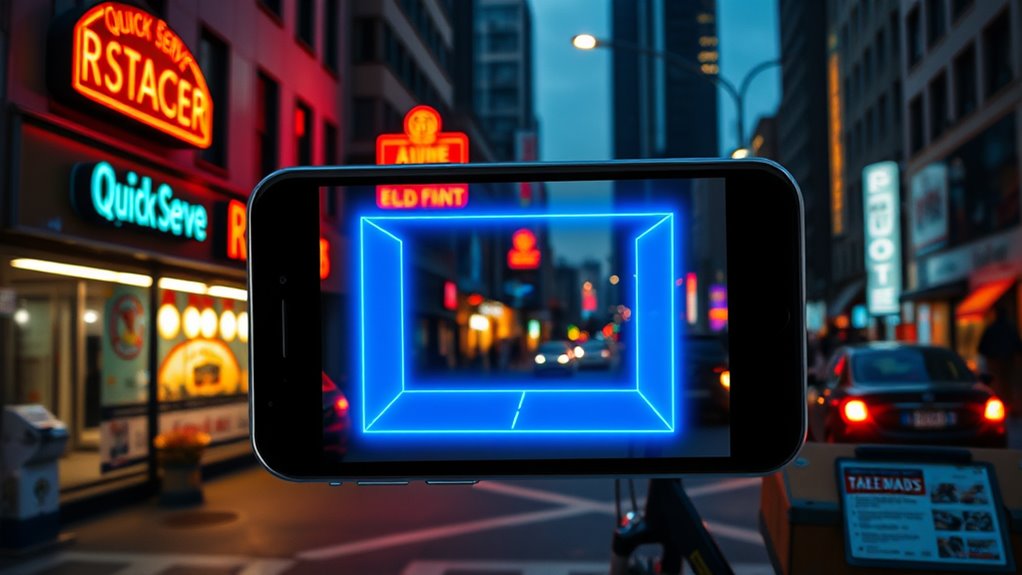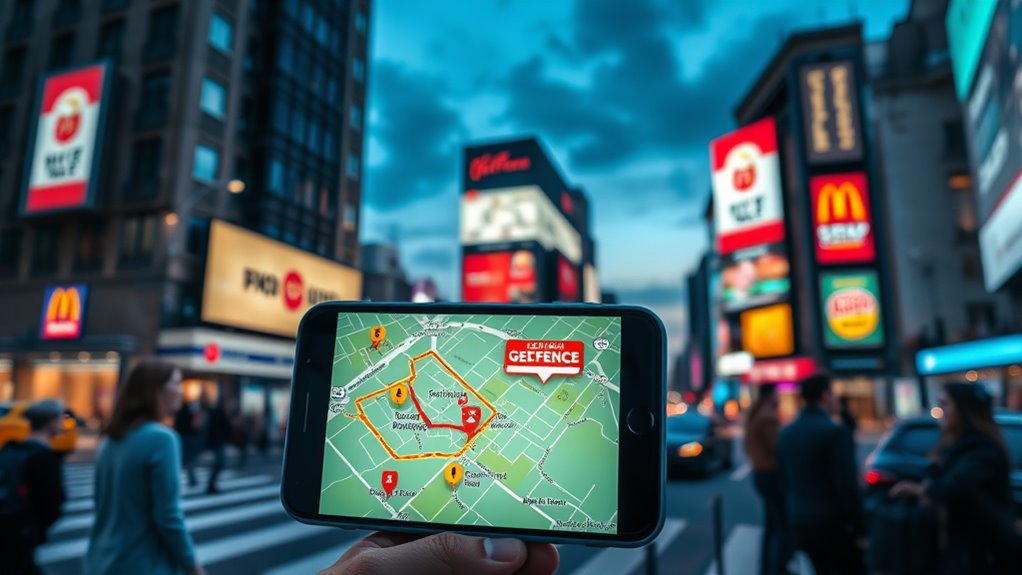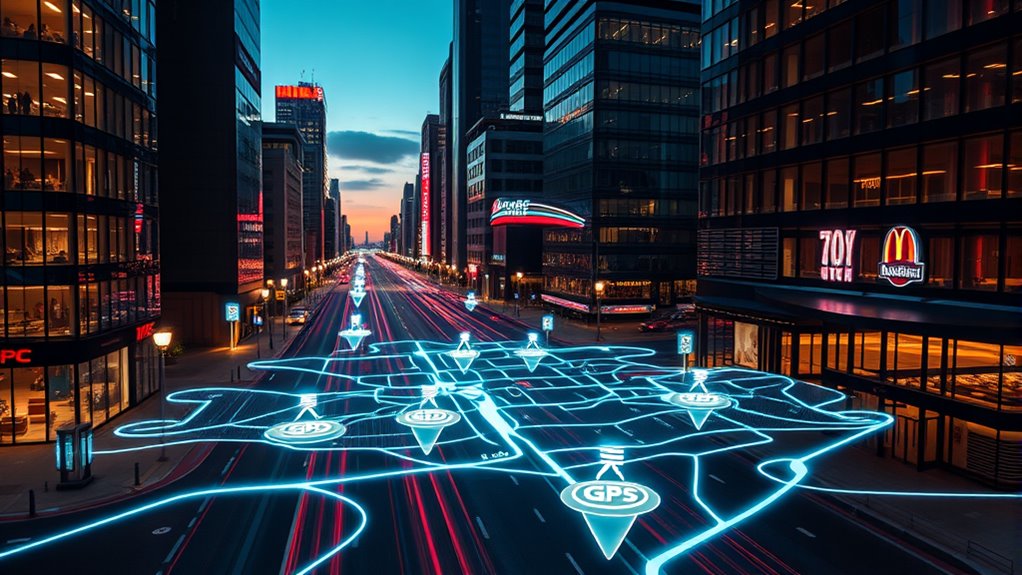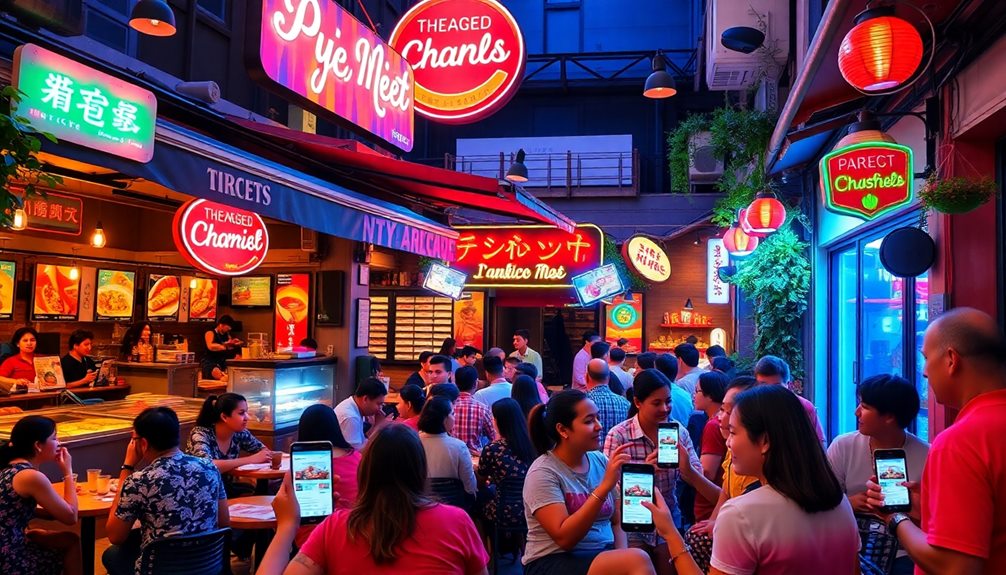Geo-fencing campaigns help quick-serve brands target nearby customers with personalized offers by creating virtual perimeters around locations using GPS, Wi-Fi, or RFID. This strategy boosts foot traffic, sales, and brand engagement while minimizing wasted ad spend. To succeed, craft compelling, timely messages and monitor performance for continuous optimization. As technology evolves, innovations like AI and AR will make these campaigns even more effective. Stay with us to discover how to make the most of geo-fencing for your brand.
Key Takeaways
- Geo-fencing enables quick-serve brands to deliver targeted, location-based offers to nearby customers, increasing foot traffic and sales.
- Precise geofences around competitors or landmarks help capture high-potential prospects with personalized promotions.
- Real-time analytics and A/B testing optimize campaign performance for maximum ROI and customer engagement.
- Campaigns can be tailored to peak hours or slow periods, boosting efficiency and revenue during key times.
- Future innovations like AI and immersive tech enhance targeting accuracy and customer experience in quick-serve marketing.
Understanding the Basics of Geo-Fencing in the Quick-Serve Industry

Have you ever wondered how quick-serve restaurants target nearby customers with their advertisements? That’s where geo-fencing comes into play. It’s a location-based marketing tool that creates a virtual perimeter around a specific area, like your favorite burger joint. When potential customers enter this zone, they receive targeted ads or offers on their smartphones. This technology uses GPS, Wi-Fi, or RFID signals to detect when someone is within the designated boundary. For quick-serve brands, geo-fencing helps attract nearby customers, increase foot traffic, and boost sales. It’s a precise way to reach people who are already close enough to visit your restaurant. By understanding the basics, you can leverage geo-fencing to make your marketing efforts more effective and timely.
Key Benefits of Implementing Geo-Fencing Campaigns

Are you aware of how geo-fencing can substantially boost your marketing results? By targeting customers within specific locations, you can deliver highly relevant and timely offers that encourage immediate action. This precision helps increase foot traffic and sales, especially during peak hours or slow periods. Geo-fencing also enhances your data collection, giving you insights into customer behaviors and preferences. With these insights, you can refine your campaigns for better engagement and ROI. Additionally, geo-fencing allows you to personalize messages based on location, making your promotions more compelling. It also minimizes wasted ad spend by focusing only on high-potential prospects. Furthermore, understanding the contrast ratio of your display ads can improve visual impact and user engagement. Overall, implementing geo-fencing campaigns provides a powerful way to connect with your audience more effectively and drive measurable growth.
Strategies for Designing Effective Location-Based Promotions

To design effective location-based promotions, you need to start with clear goals and a deep understanding of your target audience. Know what you want to achieve—whether it’s increasing foot traffic, boosting sales, or promoting a new menu item. Research your audience’s preferences, behaviors, and typical visit times. Use this data to craft personalized offers that resonate with them, like discounts during lunch hours or promotions tied to specific locations. Keep your messaging concise and compelling, emphasizing immediate value. Geofence your campaign around relevant areas—near competitors, busy streets, or popular landmarks—to maximize reach. Remember to test different offers and refine based on what drives engagement. Clear objectives combined with audience insights form the foundation of successful location-based promotions. Incorporating data analytics can further optimize targeting and campaign performance.
Best Practices for Monitoring and Optimizing Campaign Performance

Monitoring and optimizing your geo-fencing campaigns is essential to guarantee you’re achieving your desired outcomes. Regularly analyze key metrics like click-through rates, conversions, and bounce rates to identify what’s working. Use A/B testing to refine targeting, messaging, and offers. Adjust your geofences based on performance data to reach the most responsive audiences. Track real-time data to spot trends and quickly pivot strategies if needed. Here’s a quick overview:
| Metric | Action |
|---|---|
| Low engagement | Refine targeting or messaging |
| High conversion rate | Increase budget or expand geofences |
| Poor real-time data | Reassess data sources and update parameters |
Additionally, leveraging performance kits available for certain Honda models can provide insights into how your campaigns might be optimized for better results. Consistently monitor these areas to improve ROI and ensure your campaigns stay effective.
Future Trends and Innovations in Geo-Fencing Technology

As technology advances, geo-fencing is poised to become more intelligent and seamless, transforming how you engage with your audience. Future innovations will leverage AI to analyze real-time data, enabling hyper-targeted campaigns that adapt instantly to customer behaviors. Enhanced sensor technologies and multi-layered geofences will improve accuracy, reducing false triggers and increasing engagement precision. You can expect more integration with augmented reality (AR) and virtual reality (VR), creating immersive experiences that draw customers into your brand story. Additionally, privacy-centric solutions will guarantee compliance while still delivering personalized marketing. Automated systems will optimize campaigns on the fly, saving you time and effort. Interior design principles will also influence the development of more refined geofence boundaries, making them more intuitive and aligned with customer zones. As these innovations evolve, geo-fencing will become a crucial, intuitive tool for quick-serve brands to build stronger, more relevant customer connections.
Frequently Asked Questions
How Does Geo-Fencing Differ From Other Location-Based Marketing Methods?
You might wonder how geo-fencing differs from other location-based marketing methods. Unlike simple GPS tracking or proximity marketing, geo-fencing creates a virtual boundary around a specific area. When someone enters that zone, you can trigger targeted ads or messages automatically. This precision helps you reach potential customers at just the right moment, making your marketing more effective compared to broader location-based strategies.
What Are the Privacy Concerns Associated With Geo-Fencing Campaigns?
Your privacy feels like it’s under attack when you hear about geo-fencing campaigns. These campaigns can track your every move, collecting data without you realizing it. It’s like having a shadow that knows your exact location 24/7. You might be surprised how easily your personal info is shared or misused. Always stay alert and review privacy settings to protect yourself from invasive marketing tactics that cross the line.
How Can Small Quick-Serve Brands Implement Geo-Fencing Effectively?
You can implement geo-fencing effectively by first identifying your target locations, like nearby malls or offices. Use reliable geo-fencing tools to set precise boundaries, ensuring your ads reach the right audience. Focus on compelling offers and clear calls-to-action to engage customers. Regularly analyze campaign data to optimize your approach, adjusting geofences and messaging based on performance. This strategic approach helps maximize your budget and boost local foot traffic.
What Are Common Challenges Faced When Deploying Geo-Fencing Strategies?
When deploying geo-fencing strategies, you often face challenges like accurately defining boundaries, managing location data privacy, and avoiding ad fatigue among users. You might also struggle with targeting the right audience and measuring campaign effectiveness. To overcome these issues, guarantee precise geofence setup, respect privacy laws, and continuously analyze performance metrics. This way, you can optimize your campaigns and achieve better engagement with your audience.
How Is Customer Engagement Measured in Geo-Fencing Campaigns?
Imagine your campaign as a lighthouse guiding customers to your brand’s harbor. You measure engagement through metrics like click-through rates, store visits, and app interactions, which act as your navigational beacons. These indicators show how effectively you’re capturing attention and inspiring action. By tracking real-time responses, you can adjust your approach, ensuring your message hits home and keeps your audience anchored to your brand.
Conclusion
As you harness geo-fencing, you’re planting digital flags that draw customers like moths to a flame. With sharp strategies and vigilant optimization, your campaigns become a magnetic force, turning fleeting moments into loyal visits. Embrace these tools and watch your brand’s presence grow like a wildfire—spreading quickly and leaving a lasting impression. The future of location marketing is in your hands; steer it wisely and watch your quick-serve brand soar.









